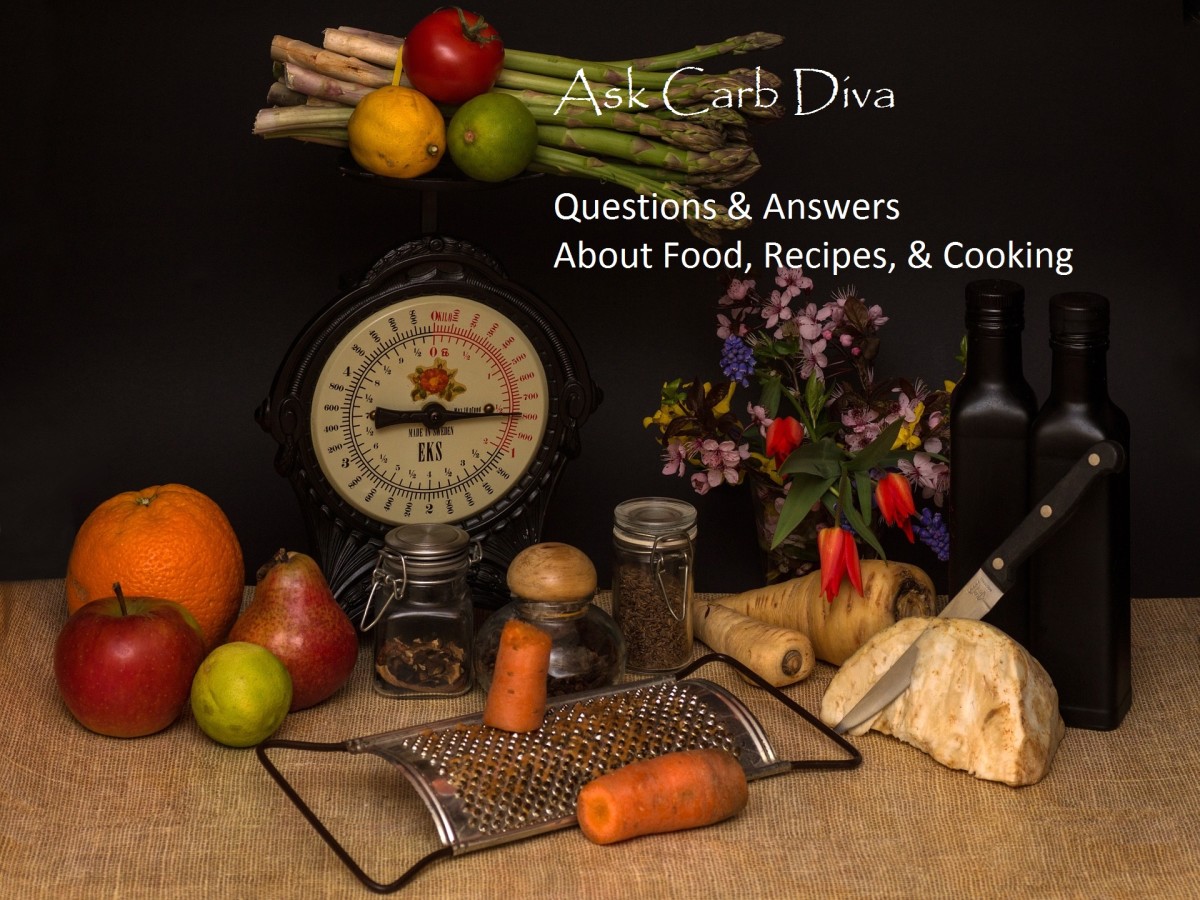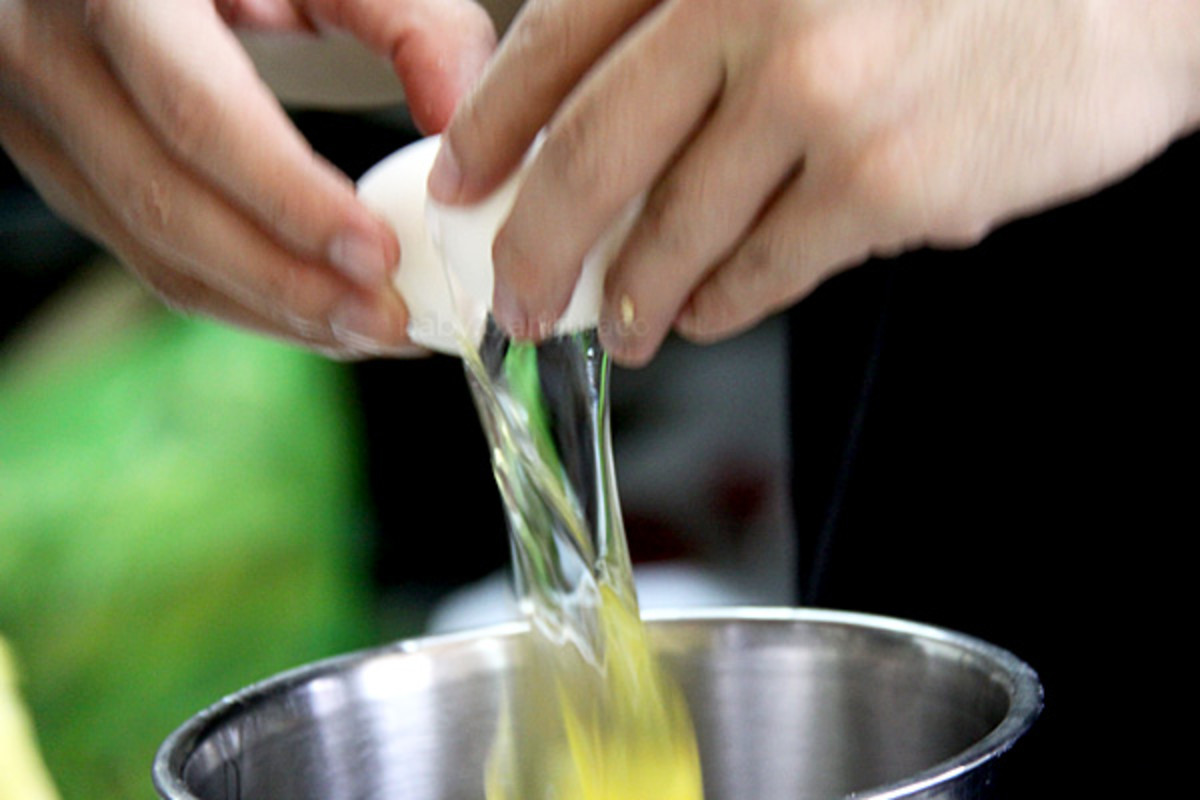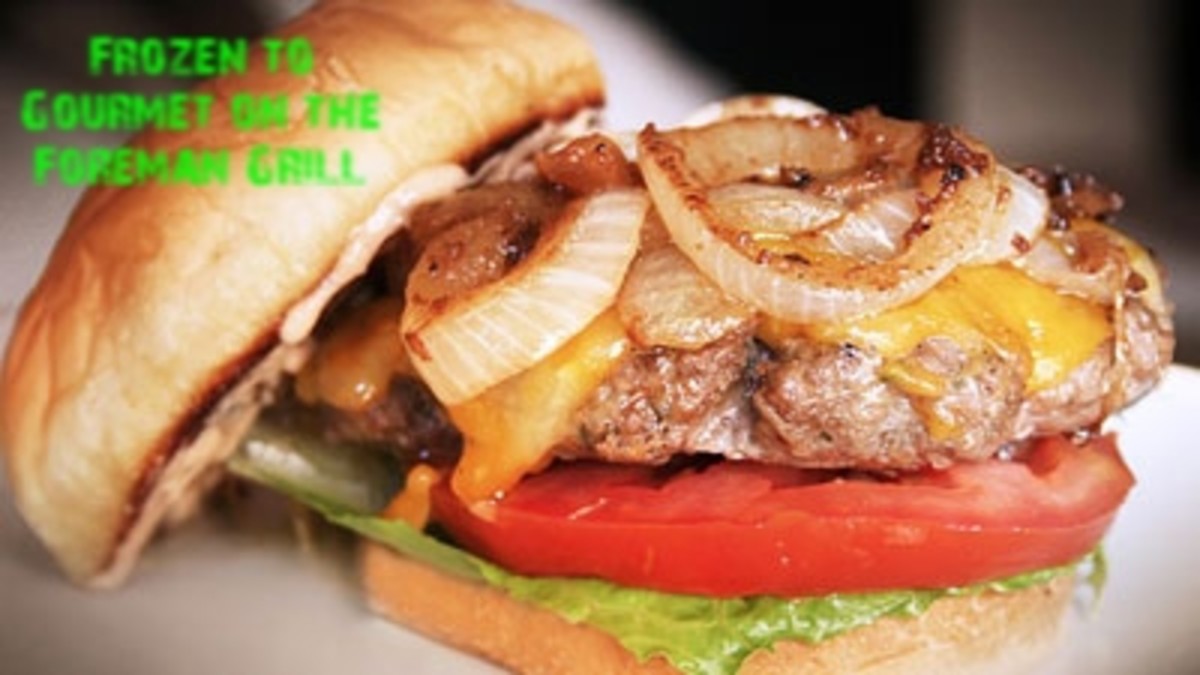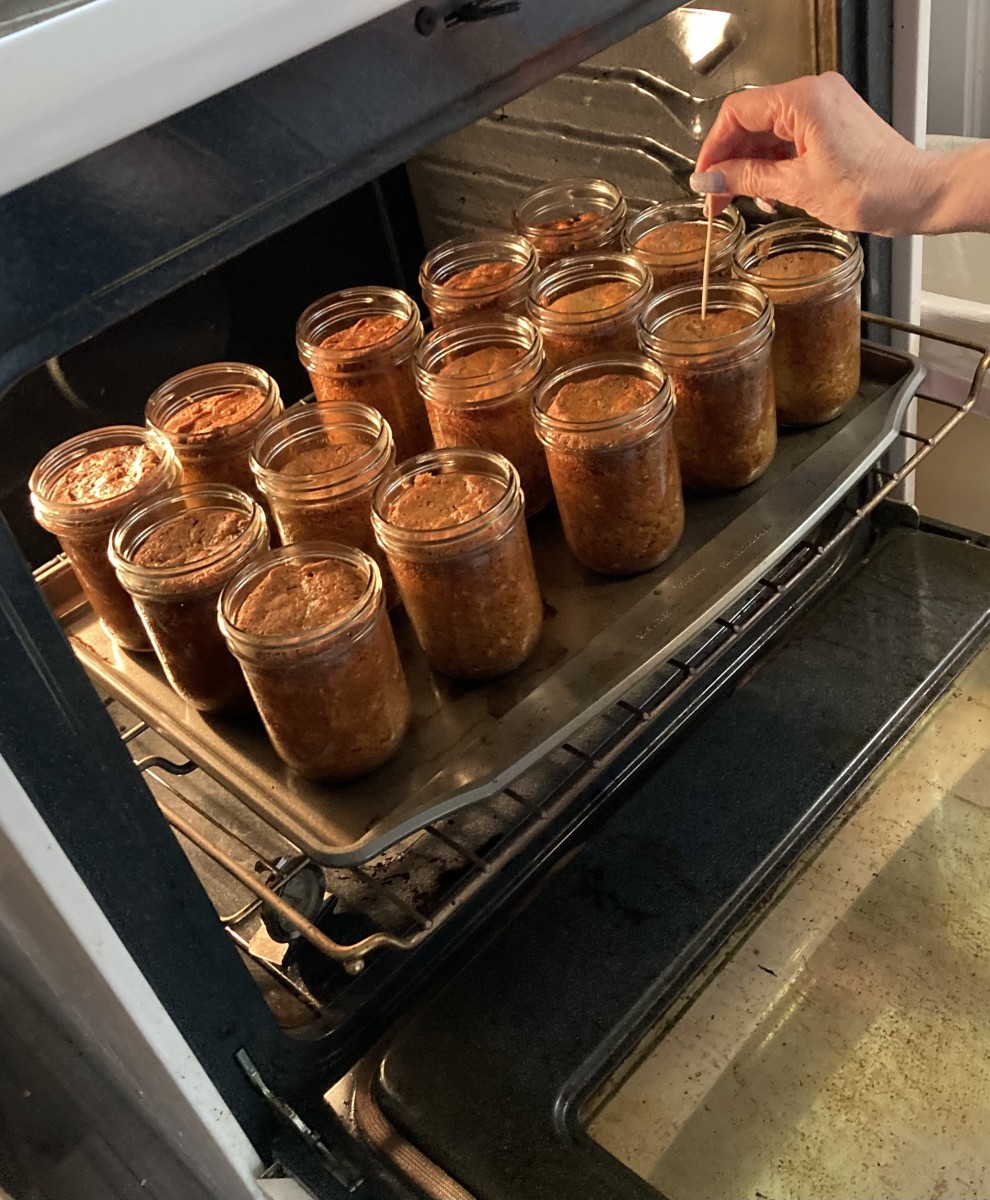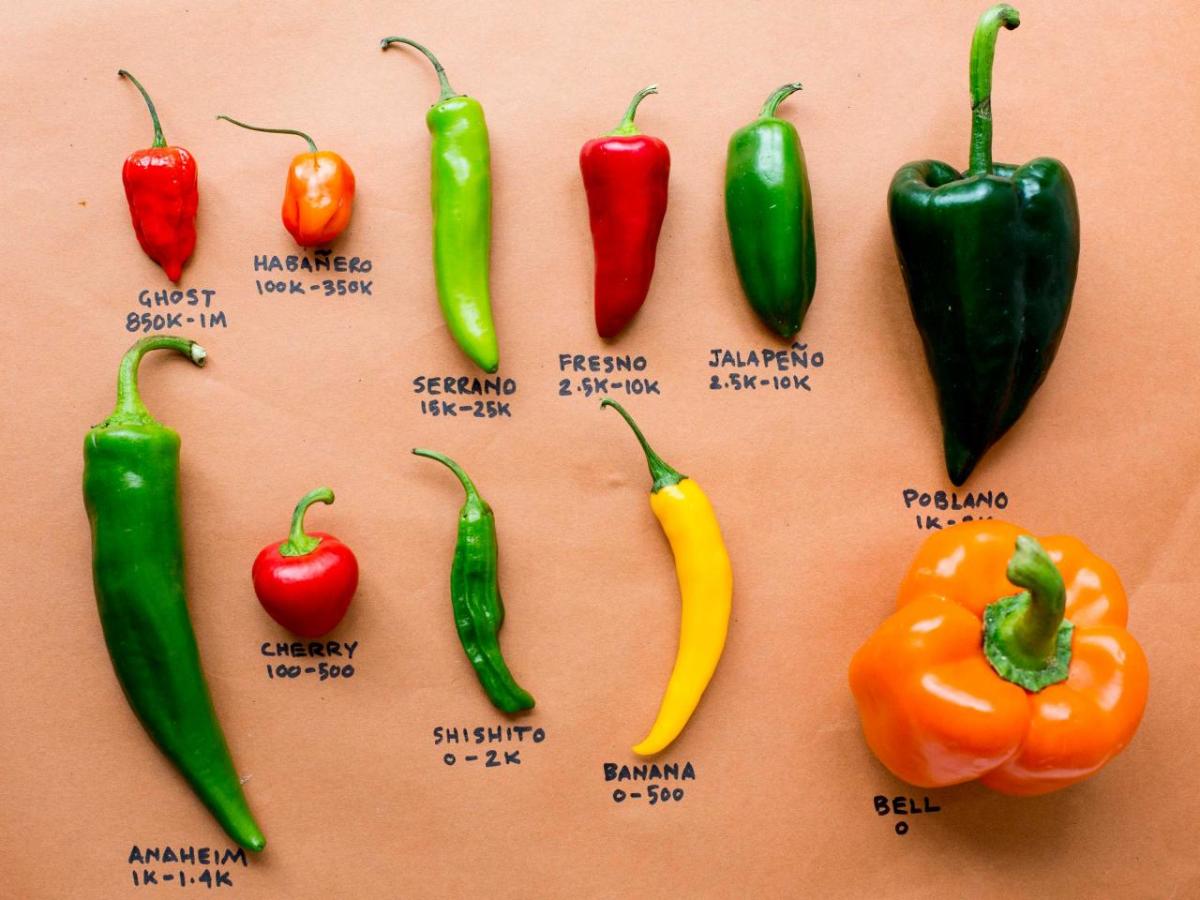Heat and foods ''Cooking with Temperatures''
Sauteing Foods
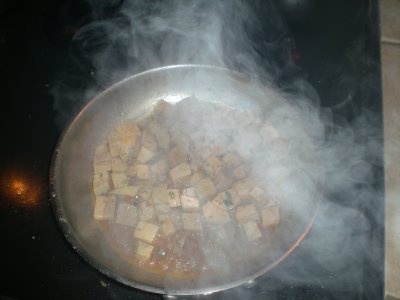
Heat and Food
Good cooking has a lot to do with chemistry. When ingredients are combined, they react in certain ways. Applying heat causes other chemicals reactions.
When you make a cake, you see an example of how heat causes a chemical change. Before heat is applied to the batter during baking, the batter is a thick liquid containing baking powder, flour, and beaten eggs.
The baking powder starts to form a gas as soon as it comes in contact with the liquid in the batter. Heat makes this reaction happens faster, and so the mixture rises. Two substances in the flour -starch and gluten-also aid the chemical change. Gluten is a substance that makes the cake rise and set. Gluten hardens when heat is applied. Starch, when moistened and heated, swells and supports the rising action. The cake also rises because the air beaten into the eggs expands when heated. Because of the heat's effect on the cake ingredients, you're able to cut a finished cake into pieces and serve them. You can't do that with batter.
Many of the foods we eat ar not appetizing unless they are chemically change by heat. A breakfast of raw eggs would not be a very popular menu offering, Scrambled, fried, or boiled eggs, on the the other hand please almost anyone.
A side order of raw bacon would not be very popular either, nor would it be very healthful. Raw meats can carry harmful bacteria. Cooking bacon, sausage, and other meats kills disease-causing germs.
Meat is made up of muscle, fat, and tough connective tissue, During cooking the heat melts much of the fat away, leaving only the tastiest and most healthful part of the meat behind.
Heat changes meat in other ways, too. It helps soften the connective tissue that runs through the muscle. This tissue is normally tough and elastic. When you heat it through, it becomes soft. A well cooked piece of meat is both tender and flavorful.
When foods are digested, they are broken down by the body. In many cases, the heat from cooking begins the process of breaking foods down for us. Raw vegetables are chewy and crunchy because of the fibers they contain. Heat softens the fibers in foods, making them easier to eat.
Cooking With Dry Heat
There are different kinds of heat, Each kind has a place in the home and the professional kitchen.
Dry heat supplies warmth without moisture. Cooking over a open fire-the oldest kind of cooking is an example of dry heat. The following are other examples of dry heat;
* Baking or Roasting.
These are really the process, Roasting is used when referring to meats. During baking or roasting, the food is surrounded with heated air, Most baking or roasting is done in ovens.
* Broiling.
To broil is to apply dry heat from a source close to the food. Temperature is controlled by how close the food is placed to the heat source. Common broiling heat sources are electrically heated coils, gas flames, and charcoal.
* Pan Broiling.
To pan broil means to broil in a pan. The direct heat source is a pan rather than a coil or charcoal. The food is not covered when it cooks, and no fat is put in the pan. The fat that results during cooking is poured off.
Cooking With Moist Heat
Moist heat supplies moisture as well as warmth. When you boil an egg, you are using moist heat , Moist heating techniques include the following;
* Boiling.
To boil is to cook a food covered in liquid that is at a temperature of 212 degrees or more.
* Simmering.
When you simme, you cook a food in liquid that is just below the boiling point in liquid that is just below the boiling point 185 - 200 degrees. Bubbles in a ;iquid that is simmering break below the surface.
* Poaching.
To poachis to cook food just below simmering in a small amount of water. The water should cover the food and should be about 160 -180 degrees. Bubbles will appear on the bottom of the pan but won't rise.
* Scalding.
When you scald a liquid, you heat it to just below the boiling point. Milk is often scalded since it should not boil. Scalding also refers to dipping an item in water that is boiling.
* Stewing. To stew something is to boil or simmer it in a liquid for a long time.
* Brasing. To braise (BRAYZ) food is to cook it in a small amount of liquid at a low temperature in a covered container.
* Steaming. Staeming is cooking with steam, either with or without pressure. Unpressurized steam may be used to cook vegetables. The vegetables are put in a wire basket and placed over boiling water. The steam cooks the vegetables. To cook with pressurized steam, you need special equipment with a tight seal. Pressurized steam cooks foods much faster than unpressurized steam.
Different Frying Methods
Frying is cooking food in hot fat or oil. Frying is a cooking method that is in a class by itself. It isn't exactly dry heat, and it isn't exactly moist heat. There are several kinds of frying.
* Sauteing.
To saute (saw-Tay) is to cook in a small amount of fat or oil. Usually sauting is partial cooking done in preparation for other cooking. Browning meat is an example of sauteing.
* Panfrying.
When you panfry, you completely cook a food in a pan with a small amount of fat or oil. Meats are often panfried.
* Deep-frying
To deep-fry, you submerge the food in hot fat or oil, which cooks the food.
Fried foods have become less popular in recent years. Frying adds ft and calories to the food that is being cooked. People who are concerned about their weight and their health tend to prefer other methods of cooking.
How Heat Travels
How does heat penetrate food and cook it?
Heat can travel through gases, liquids, and soilds with little difficulty. To cook food, heat must travel from its source into food itself. Heat can transferred in three basic ways.
* Conduction.
Conduction means that heat is passed from something hot to something cooler. Imagine cooking hamburgers in a pan on a gas stove. The heat passes from the flame to the bottom of the pan. As the pan gets hot, the heat passes from the pan to the hamburgers, this is conduction. Cookware should heat quickly and evenly. Food is cooked by placing it in direct contact with the heated pan.
* Convection.
Convection means the spread of heat by the movement of hot air steam, or liquid. Heat has a natural convection movement of its own. A pan of water on a hot stove demonstrates this. The water at the bottomof the pan wii be heated first. It will rise, and the cooler water will sink. Then that cooler water will be heated and will rise and so on. Air follows this same pattern. Hot air rises - cooler air sinks. A normal oven takes advantage of this movement by putting the heating coil at he bottom of the oven. A convection oven creates this movement with fans that circulate the air and speed up the natural convection movement.
* Radiation.
Radiation cooking is the transfer of heat by waves. Waves of heat radiate from the heat source and cook the food by radiation.
Another example is boiling. Both charcoal grilling and broiling use infrared (in-fruh-RED} waves, a particular lenght of heat wave. Another knid of cooking by radiation is called microwave cooking. It uses a different length wave. Microwaves cook food more swiftly than infrared waves do. They get into the food and cause friction that creates heat and cooks the food.
Just keep in mind the temperatures pay a very important role in cooiking, it can help with bacterica and many other things, you just have to keep foods refrigerated and use the proper equipment and you will be ok.

